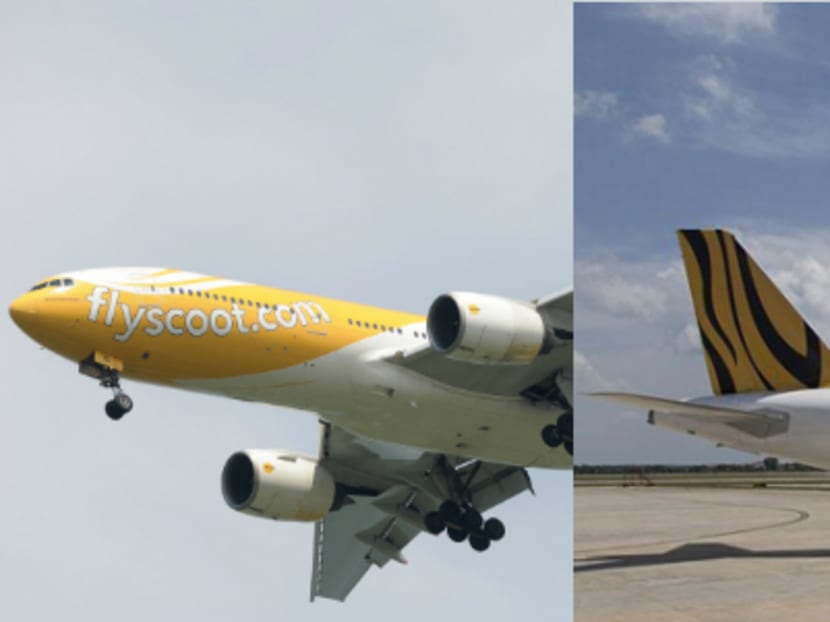Tigerair to come under Scoot brand from next year
SINGAPORE — By the end of next year, Tigerair as a brand will be no more. Tigerair’s 13-year-old stripes will be replaced with Scoot’s livery, under an integration plan adopted by the budget carriers’ parent company Singapore Airlines (SIA).
SINGAPORE — By the end of next year, Tigerair as a brand will be no more. Tigerair’s 13-year-old stripes will be replaced with Scoot’s livery, under an integration plan adopted by the budget carriers’ parent company Singapore Airlines (SIA).
Scoot and Tigerair will adopt a single brand and operating license next year, said Budget Aviation Holdings, which was formed in May this year to house and manage SIA’s low-cost carriers.
“Following a review, we have determined that the logical next step is to pursue a common operating licence and common brand identity to enable a more seamless travel experience for customers,” said SIA CEO and Budget Aviation Holdings Chairman, Mr Goh Choon Phong.
Budget Aviation Holdings CEO Lee Lik Hsin added: “The Tigerair business, which has an established network and market presence in Southeast Asia, will benefit from the strength of Scoot’s brand for the next phase of its growth. The big driver is the potential to ramp up the revenue side of the business and the long-term overall benefit.” Mr Lee added that there will no redundancies.
The integration of Scoot and Tigerair – which together operate a combined network of 59 destinations over 16 countries across Asia Pacific – is expected to be realised in the second half of next year, and cover flight scheduling and connections, a common website, contact centre and check-in counters.
All current Scoot/Tigerair bookings and flights will not be affected. When both airlines are fully integrated under a single brand, guests who already have bookings will receive new confirmations reflecting the changes to the brand and/or designated airline code, the carriers said in their respective Facebook pages. Tigerair also said, in response to questions on Facebook over a potential increase in ticketing prices after the integration, that fares are generally dependent on destination as well as demand and supply, but that Scoot and Tigerair were founded on the premise of providing great value air fares, which “will not change with the integration”.
The integration of the airlines marks the end of troubled Tigerair, which was founded in 2003 with ambitions of morphing into a strong budget airline in the region. However, with aggressive competition from regional operators such as AirAsia and Jetstar, Tigerair faced tough times making inroads in the region.
Around 2012, though, it made some traction in Indonesia and the Philippines, with equity stakes in Tigerair Mandala and Tigerair Philippines, but the move was widely considered by analysts as late to the market. By then, the Philippines market had about five low-cost carriers, while Indonesia already had three established budget operators.
The airline offloaded its stake in Tigerair Philippines to Cebu Pacific in March 2014, and pulled the plug on Tigerair Mandala after failing to find a buyer.
Currently, it has a brand franchise agreement with Tigerair Australia and a 10 per cent equity stake in Tigerair Taiwan. In both cases, Mr Lee said, the agreements continue while discussions on further course of action are underway.
In May, Tigerair – which had suffered losses for several years - was delisted from the Singapore Exchange after it was bought out by SIA.
“SIA really gets the majority of the upside from this decision, as the elimination of the tarnished Tigerair brand will bring down its costs, and remove the duplication of brands. Given that the two airlines have already been operating side-by-side for some time, there won’t be many immediate benefits for passengers, but overall, it does make Scoot a better competitor against the likes of Jetstar and AirAsia, which could help to keep the cost of air travel in Asia low,” said Mr Ellis Taylor, Asia Finance Editor at Flightglobal.
For the SIA group, added CAPA chief analyst Brendan Sobie, having one single brand will unlock more synergies and ultimately improve profitability at SIA’s budget operations.
“Having two brands was always rather messy and unideal. It was only necessary because, at the time of Scoot’s establishment and the group’s decision to pursue the long haul low cost market, it did not have control or a majority stake of its short-haul low-cost affiliate Tigerair,” Mr Sobie added.
Scoot operates a fleet comprising 12 Boeing 787 Dreamliner aircraft with eight more on order to be delivered between 2017 and 2019, Tigerair has a fleet of 23 Airbus 320 aircraft’s fleet, with 39 A320 neo aircraft on order and 11 on purchase option to be delivered between 2018 and 2025.







